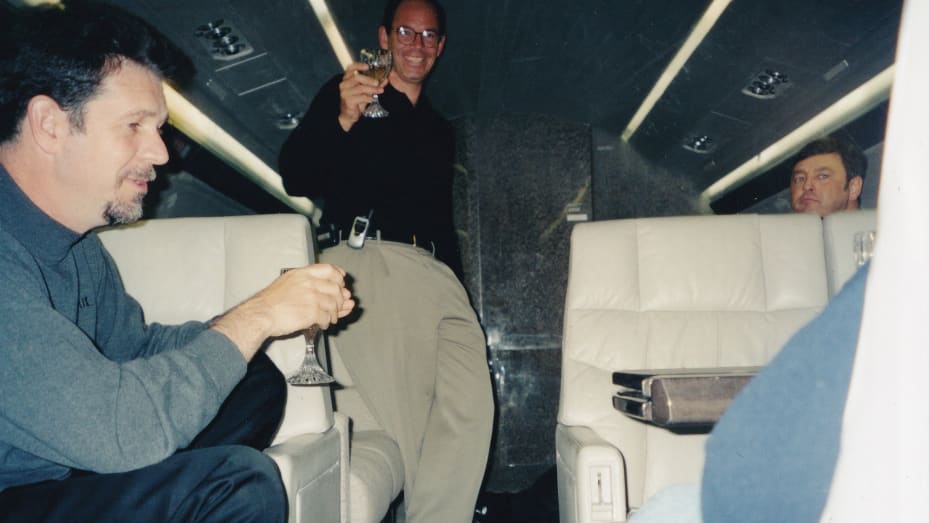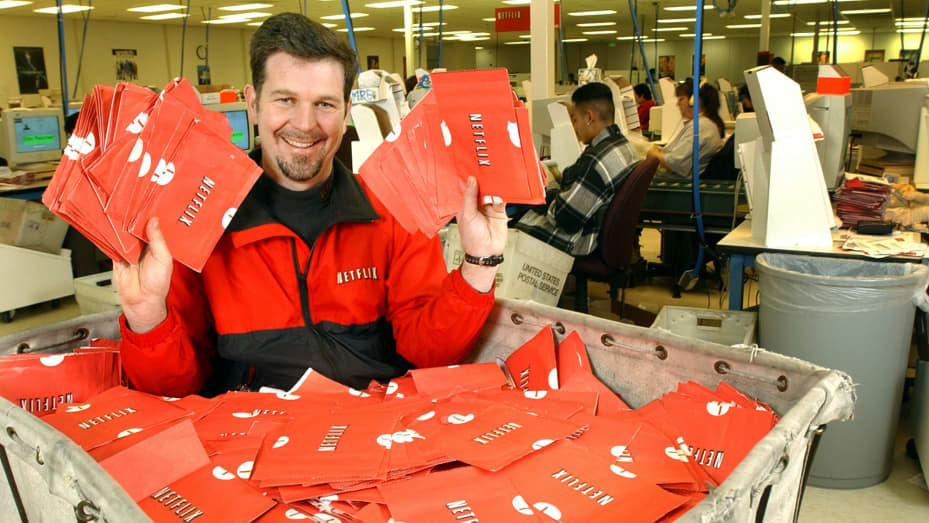In the summer of 1998, Reed Hastings and Marc Randolph launched Netflix: a start-up company that positioned itself as a movies-by-mail subscription service. A 34-year-old Jeff Bezos, four years into his own endeavours with Amazon, gave Netflix a call just two months after the service launched. What followed, gentlemen, is a lesson on the importance of self-belief, tenacity, and having hands made of diamonds.
After Amazon had its US$54 million (AU$74.2 million) debut on the stock market the year prior, Bezos was feeling the pressure from investors to make aggressive acquisitions to expand the company’s e-commerce footprint. Amazon, at this point in time, had about 600 employees and was raking in nearly US$100 million (AU$137 million) in revenue just from selling books.
Randolph, who was the company’s CEO, and Hastings, co-founder and investor, flew out to Seattle to talk all things Netflix with Jeff Bezos and his team. As Randolph writes in his memoir, somewhat ironically titled That Will Never Work, “We went into that office and it was a pigsty.”
“People were squeezed in there. The desks were all doors — like old wooden doors … on wooden posts and Jeff was in an office with four other people.”
RELATED: Jeff Bezos Drops $105 Million On Hawaiian Estate Surrounded By Lava Fields
Randolph and Hastings quickly realised that Bezos wanted to purchase Netflix to help jump-start an entry for Amazon into the video market. At the conclusion of the meeting, Bezos apparently offered Netflix “somewhere in the low eight figures” to acquire the company. In the words of Randolph:
“When someone uses ‘low eight figures,’ that means barely eight figures. That means probably something between $14 million and $16 million.”
Considering Netflix was only in its infancy, this was a pretty significant number for what was around two months of work. Randolph owned 30% of the company and Reed owned 70%, meaning the pair of them would have walked away with several million dollars in their own pockets.
For a company that wasn’t yet making any money, this was surely a compelling proposition. While Randolph and Reed were doing plenty of business (most of it through DVD sales), their costs were incredibly high and they were without an effective business model. At the time, what they were doing was not repeatable, scalable or even profitable; on the plane ride home, the pair weighed up their options.

RELATED: Bill Gates Saved Apple From Bankruptcy With $200 Million Investment In 1997
Both Randolph and Hastings ultimately chose to trust the process, as both realised they were “on the brink of something.” They chose to have faith in their strong website, their smart team and the handful of deals in place with DVD manufacturers. Netflix had already managed to figure out a way to source basically every DVD around and felt they were “unquestionably the best source on the internet for DVDs.” They both knew that if they stuck it out and didn’t sell to Amazon, they would soon be competing with it.
The meeting with Bezos was actually a large element of the spark to ultimately think about new ways to get out of selling DVDs and rent them instead. Netflix knew Amazon would be its biggest competition. As soon as they landed, the duo decided to politely decline Bezos’ hefty offer.

The decision obviously paid off. Netflix (NFLX), having grown out of movie rentals into a streaming and production company, exceeded US$20.2 billion (AU$27.75 billion) in revenue this year from its 214 million paid subscribers. It’s now the second-largest company in the media and entertainment sector.
In short, that’s a lot more than the ‘low eight-figures’ Bezos offered all those years ago. In case it was the subject of any concern for you, things didn’t work out too badly for Jeff Bezos either.










![Are You Still Watching Soon You Won't Have A Choice [Netflix x Warner Bros]](https://www.bosshunting.com.au/wp-content/uploads/2025/12/Are-You-Still-Watching-Soon-You-Wont-Have-A-Choice-Netflix-x-Warner-Bros-300x169.jpg)
![This Ex-Ballerina Just Became The Youngest Self-Made Female Billionaire [Kalshi Luana Lopes Lara Net Worth]](https://www.bosshunting.com.au/wp-content/uploads/2025/12/This-Ex-Ballerina-Just-Became-The-Youngest-Self-Made-Female-Billionaire-300x169.jpg)



